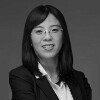When a company promotes its products or services, it will naturally use laudatory terms or phrases to describe their quality. However, in Vietnam, such use could constitute trademark infringement, as many terms with a descriptive or laudatory nature have been granted registration as trademarks, often without disclaimers. Examples include ‘Nước Mắm Mẹ Làm’ (‘Fish sauce made by mom’) under Registration No. 392575 for fish sauce, ‘Drink it, Wear it’ under Registration No. 387444 for clothing retail services, and ‘Making Cancer History’ under Registration No. 388177 for healthcare services.
Imagine a case where a hospital advertises that its cancer treatment services can help to “make cancer history”. Would the advertisement be considered trademark infringement of the registered mark ‘Making Cancer History’?
Fair use or infringement?
Under the doctrine of descriptive fair use commonly adopted worldwide, a third party, even a direct competitor, may use another party’s descriptive trademark to describe its own products or services, even if the mark has acquired secondary meaning. However, that use can only be in a purely descriptive manner.
Descriptive fair use requires that the mark being used describes a quality or an attribute of the goods or services, rather than indicating the source. The descriptive words must also be used in the normal course of language. In addition, the mark must be used in the text portions of an advertisement and not as a banner or in any other manner that sets it apart from the other words in the sentence or paragraph in which it is used.
To be nominative fair use, such use should accurately refer to a trademark owner or to goods or services and cannot be misleading or defamatory, or imply endorsement or sponsorship by a trademark owner.
Vietnam does not have any detailed regulation on fair use of descriptive marks. However, the Intellectual Property Law recognises, under Article 125, that owners of trademarks do not have the right to prevent others from “using in an honest manner people's names or marks descriptive of the type, quantity, quality, utility, value, geographical origin or other properties of goods or services”. Therefore, it is understood that to safely use another party’s marks which are descriptive marks, such use should only be for descriptive purposes, to meet the criterion of honest and nominative fair use.
How to safely use a mark
It can be tricky to determine what is considered fair use. Sellers should not assume that any particular use of a trademark not belonging to them (that they do not have permission from the trademark owner to use) is acceptable under fair use. Below are some tips that may be helpful to eliminate such infringement risks when using descriptive marks.
Conduct a trademark search before launching product
It is always a wise tactic to conduct a clearance search for any potential risk. Even if you do not intend to use a term as a mark, its presentation on product packages or signboards may be regarded as use of a trademark and, thus, an infringement risk.
Fair use
Make sure that the term is used in a fair-use manner as described above. However, as the border between fair use and infringement may be very thin, it is recommended that the totality of the use is looked at, including the fonts used, the size of the text and any other ways that the trademarked term is used. For example, the hospital mentioned above may publish an advertisement such as “ABC Cancer Centre provides treatment and therapies that can help you control your symptoms and, furthermore, may help make cancer history with very little risk of recurrence.”
This sentence uses the phrase “make cancer history” in a quite descriptive manner in the normal course of language to describe an attribute of the services being provided, without distinguishing or setting apart the descriptive phrase from the remainder of the advertisement.
However, the same advertisement may constitute trademark infringement of the registered ‘Making Cancer History’ mark if presented as follows: “ABC Cancer Centre provides treatment and therapies that can help you control your symptoms and, furthermore, may help in Making Cancer History.”
The capitalisation sets apart the trademarked words from the remainder of the advertisement and would not be descriptive fair use.
Earlier well-known status/wide use
A registered mark may be invalidated or banned from exercise if it conflicts with previously established trademark rights of others. Therefore, if you have used a term or phrase for a long period and it has acquired secondary meaning from your extensive use before the registration of the descriptive mark, you may have grounds in defending against a trademark infringement claim.
Genericness of the mark
You may also argue that the descriptive term has become generic and widely used by many other companies for similar products. Under the recently revised Intellectual Property Law, a mark that has become generic after its registration can be invalidated.
Prior consent from the trademark owner
This action may safeguard your use, and infringement risk should be eliminated.
Other tips
You may consider registering descriptive terms as part of your own trademark to avoid worrying about infringement risk. For example, you can apply to register the package of a product as a trademark in which the descriptive element is only a part. In such case, the overall presentation of the mark will be protected and the descriptive element will likely be disclaimed; however, you can still use the overall product package.
The idiom ‘better safe than sorry’ is a good reminder of the importance of looking carefully at any element appearing on products before using it, even when it seems very obviously safe. With careful planning and wise tactics, the risk and loss can be avoided.












